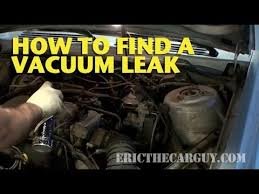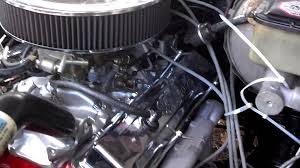Are you looking for the best way to check for vacuum leaks in your car? Well, there are multiple ways to determine whether your car engine is leaking or not. 
There are various methods for checking for auto vacuum leaks. Here are some of the easiest and safest.
Visual Inspection
First things first, try a visual inspection. Before you can attempt any other method, it is good to simply take a look for any leaks. You will want to check all the connections and vacuum hoses in your car’s engine. Look out for any cracked, loose or disconnected hoses. While your chances of catching a vacuum leak using visual inspection are quite low, it’s definitely worth a shot.
Use Aerosol Carburetor Cleaner
If you are not able to locate a vacuum leak by visual inspection, you will want to head over to the local auto-parts store and buy a bottle of aerosol carburetor cleaner. Start your engine and leave it idle. When it’s is turning over, carefully spray the liquid onto the suspected points. The engine will draw the liquid into itself when it reaches the leak. You will notice the engine’s speed suddenly change.
If you cannot locate aerosol carburetor cleaner, starting fluid is equally as effective.
Propane Method
A much faster technique for detecting vacuum leaks is by getting a bottle of propane. First, you attach a length of rubber hose onto to the gas valve. 
Note: On engines operating a computerized idle control speed, first disconnect the idle speed control monitor.
Smoke Machine Method
Another and much safer technique is using a smoke machine. The machine feeds artificial smoke into the intake manifold. The smoke emitted by the machine may also be mixed with an ultra-violet dye so that leaks can be easily seen. Check for smoke that is seeping out of the gaskets, cracks and hoses in the manifold and look out for the ultra-violet smoke to help you identify the leak.
Electronic Method
There are some electronic tools that have been designed to detect vacuum leaks. An electronic detector will flash or beep when it detects ultrasound vibrations that are caused by a leak. 
Bottom Line
You must exercise extreme caution when using propane, aerosol carburetor cleaner or starting fluid on an idle engine. These solvents are extremely flammable. Do not smoke while you are handling any of these products. It is also advisable that you conduct this procedure in a well-ventilated area and away from dwellings.
Resources:
http://www.crankshaftcoalition.com/wiki/Finding_vacuum_leaks
https://www.youtube.com/watch?v=UL9NqqZToJs
The visual testing method is one that I didn’t even THINK of when I was getting my car smog checked out in California. I simply took the car in without popping the hood, because I thought everything was running smoothly. Turns out, they can fail you on just a visual inspection without even starting the car up. I had about 4 inches of vacuum hose that I guess had been exposed to water/some other liquid, and as a result looked super cracked and old. I’m SHOCKED it was still holding together.